Last year, I participated in Kitchen Kettle Village’s annual Rhubarb Festival as a judge for the baking contest. Before agreeing to take on the assignment, I forewarned the event’s organizer, Lisa Horn, that my rhubarb experience was somewhat limited. Still, I was game to put my tastebuds to the test.
What little rhubarb experience I have can be traced to my grandmother, who lived just down the road from Kitchen Kettle Village in Gordonville. I recall that she always made a rhubarb dessert that, depending on the timing of Easter, appeared on the dining room table for holiday dinners. Reduced in a saucepan with heaps of added sugar, the Jello-based dessert nonetheless retained just the right amount of tangy flavor. While I’m admittedly fussy about certain food textures, I recall the dessert delivered a pleasant taste sensation. Unfortunately, the recipe has gone missing, but I did find a similar one – Rhubarb Dessert from Mrs. Barbara Lapp – in the Lancaster Co. Amish Cookbook, that I might have to try. (Recipe)
Fruit or Vegetable?
Rhubarb is hard to miss. The bright-green leaves announce that spring has arrived. The tall, magenta-hued, edible stalks look like celery. While it is a member of the buckwheat family, rhubarb is often mistaken for Swiss chard, which is more closely related to beets.
Without added sugar, rhubarb’s tart, astringent flavor can be hard to swallow. Nonetheless, rhubarb is versatile, as it can be cooked, baked, canned and frozen. It can be used as a fruit or a vegetable.
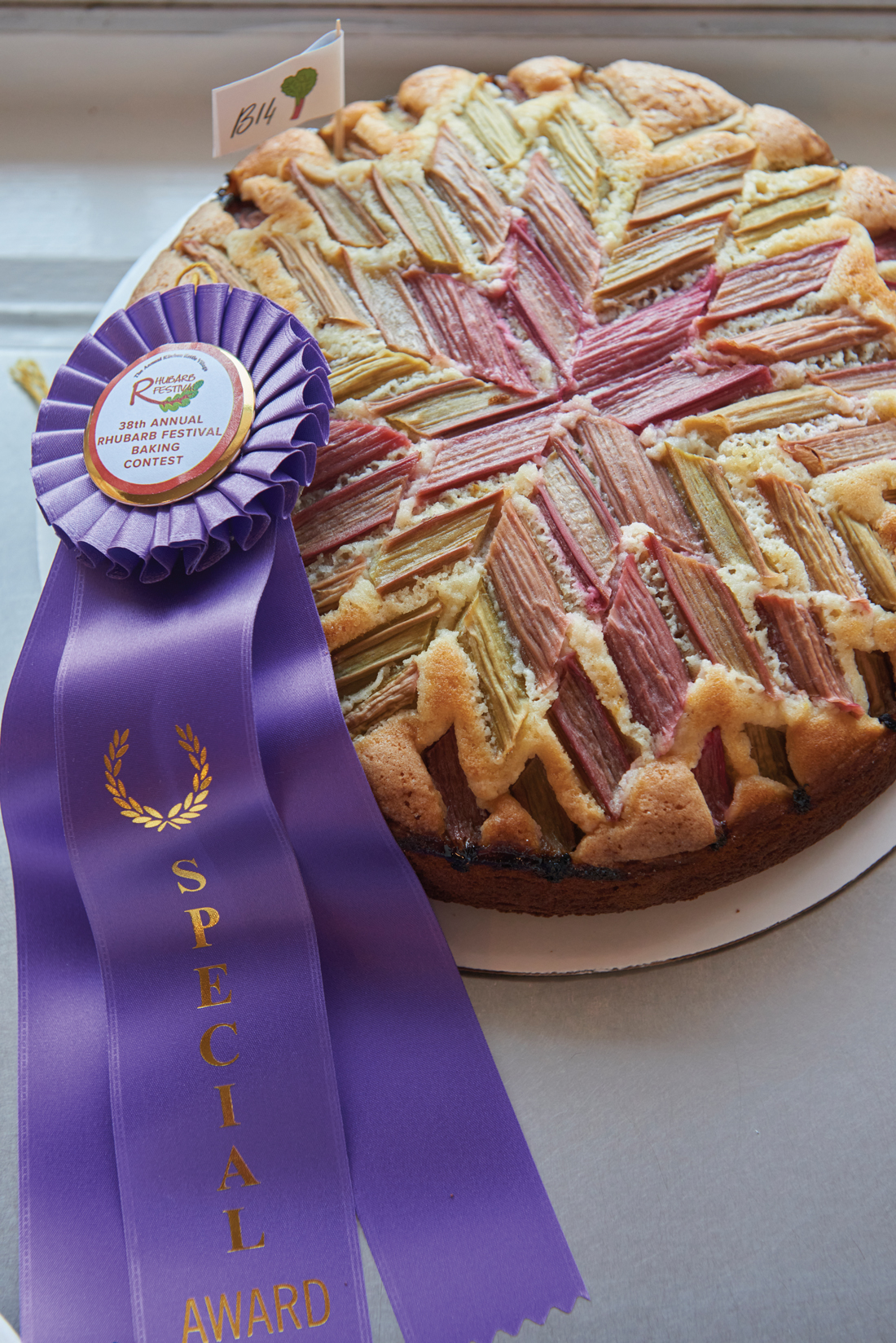
Holly Miller’s use of rhubarb to create a quilt-like pattern atop her pie earned the Judges’ Choice award for appearance.
Leveraging its tart flavor, rhubarb is commonly used as an ingredient in pies, cakes, jams, crisps, crumbles, bread, muffins, cobblers and other desserts. It’s almost always associated with its springtime brethren, strawberries. Given their diverse yet complementary taste profiles, strawberries and rhubarb often co-star in many dessert recipes.
Rhubarb can also be used to bring a tangy taste to beverages such as lemonade, cocktails and spirits (with club soda and simple syrup).
Not to be overlooked, rhubarb also works beautifully in savory dishes such as a chutney served with prosciutto or pork.
Being the edible component of the plant, and not growing from its flowers, rhubarb is also considered to be a vegetable. Use it in stir-fries, salsa, salads and as a side dish. I even saw one online recipe that used rhubarb as an ingredient in barbecue sauce. While it’s not a superfood like wheatgrass or spinach, rhubarb does offer fiber, antioxidants, vitamins C and K1, potassium and calcium.
Lancaster County Rhubarb Festival
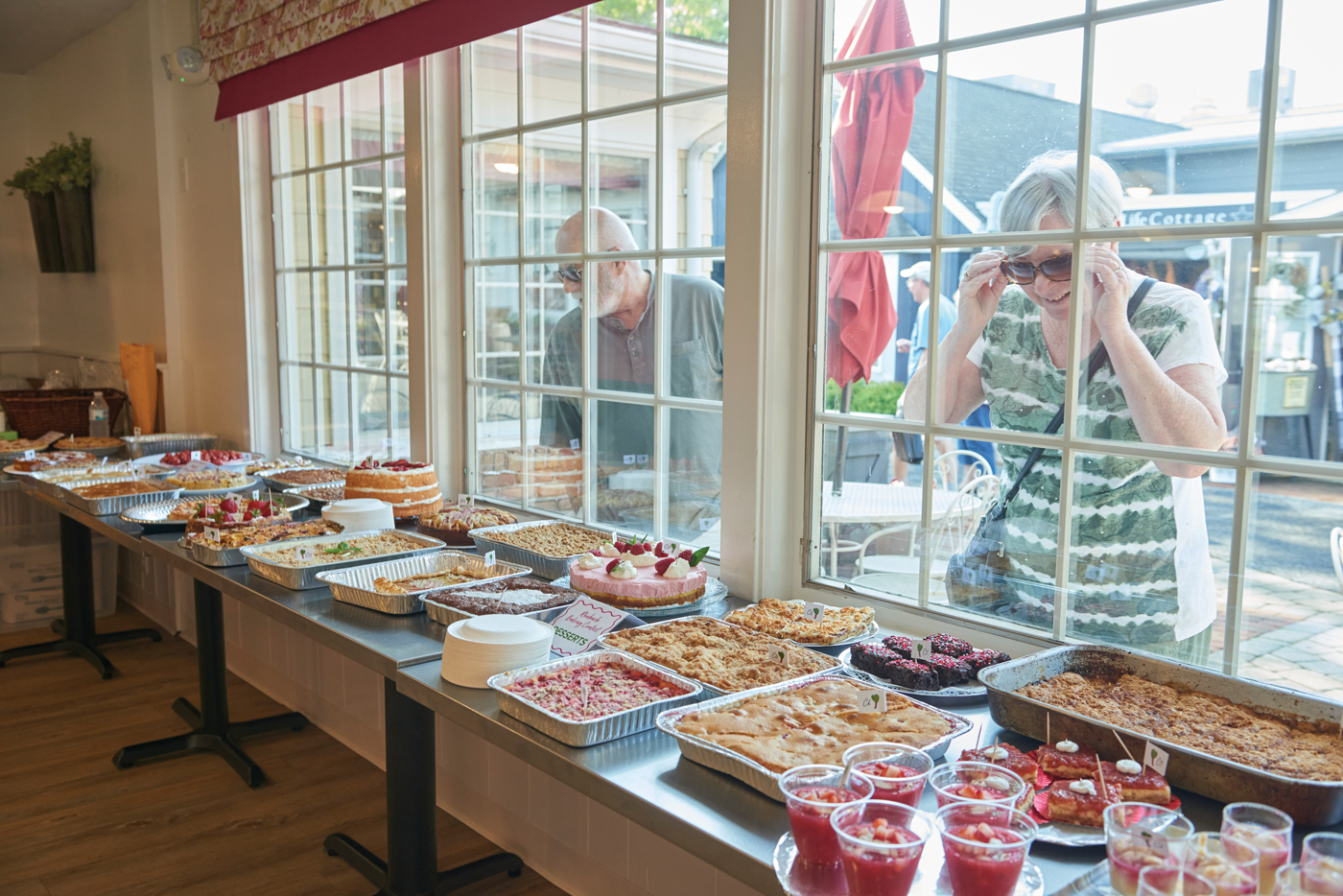
Visitors peer through the window to get a sneak peek of the entries. Last year’s baking contest was the first to be held since 2019, due to Covid.
Last year, the rhubarb baking contest received a warm welcome back to Kitchen Kettle Village. Always a part of the annual Rhubarb Festival – this year the festival will celebrate its 39th year – the baking contest represents an opportunity for area bakers to engage in friendly competition ahead of fair season. Because of Covid, the baking contest had not been held since 2019.
Not knowing what to expect, this first-time judge was nearly overwhelmed by the sight of more than 30 pies, cakes and other items that awaited judging. Fortunately, judges were organized by dessert categories – pies, cakes and desserts – and were charged with sampling a small portion of each item within the assigned category over a couple of rounds. Within each category a winner was declared.
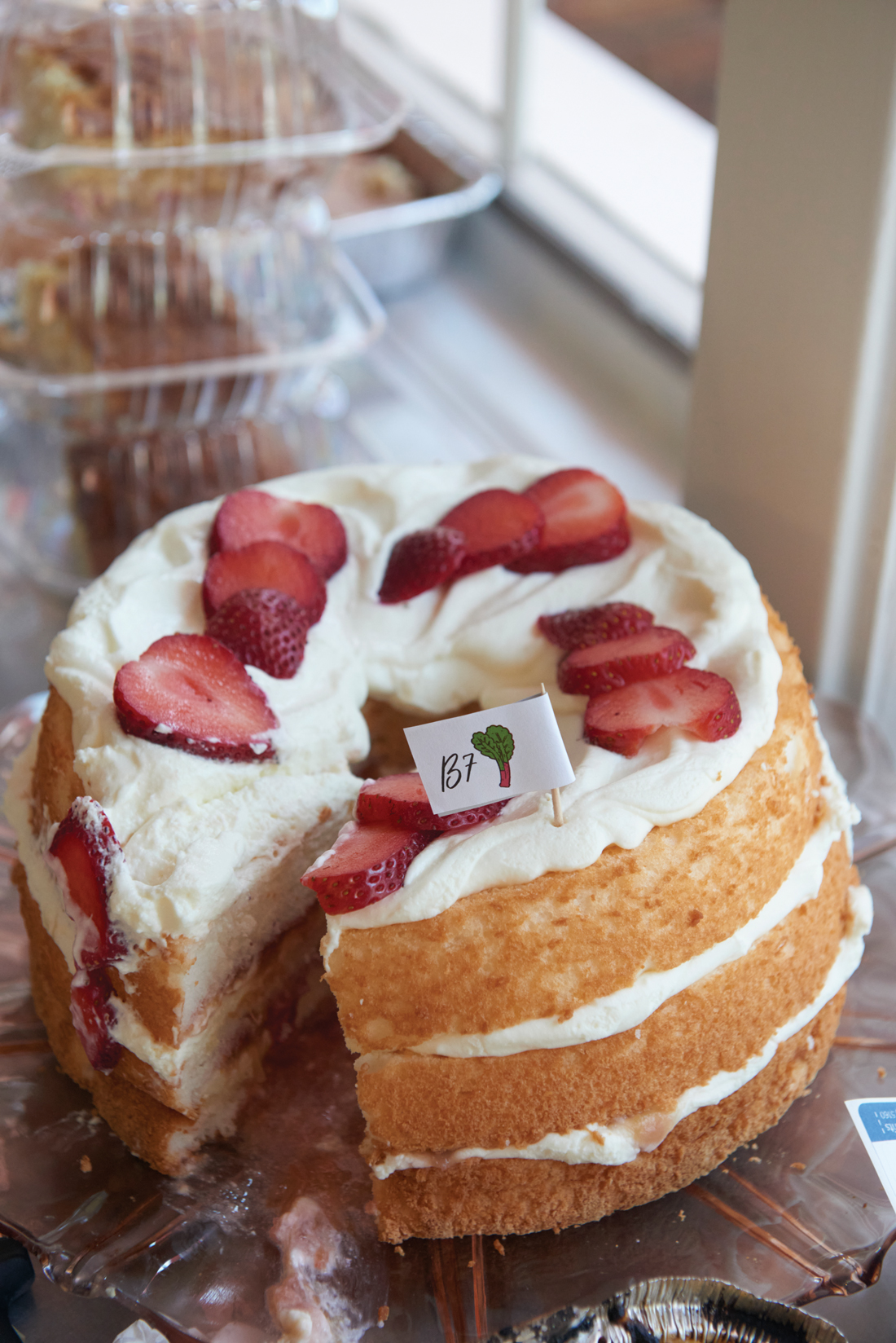
Diann Stoltzfus’ strawberry-rhubarb angel food cake won the cake category and went on to win best-of-show honors.
The best of each category was then sampled by every judge during a final round of judging to determine the grand-prize winner. Better still, that portion of the judging process was a team event, discussing flavors and tasting experiences before settling on a score.
The clear favorite was a strawberry-rhubarb angel food cake. The bake, texture and taste were outstanding. The rhubarb component was balanced and not hidden behind the strawberry inclusion. It just so happened that the grand-prize winner came across the category I helped judge (cakes), so I got to sample it twice. No complaints here.
The cake and grand-prize-winning entry was baked by Diann Stoltzfus, who happens to work at Kitchen Kettle Village. Other winners included Shirley Horn (pie category for her rhubarb pie) and Carol Horst (dessert category for her rhubarb cheesecake bar). The Judges’ Choice (for appearance) went to Holly Miller for her rhubarb pie. Prizes are awarded to those who finish in first through third places.
An Added Benefit
Perhaps the sweetest ingredient of Kitchen Kettle Village’s Rhubarb Festival is the fact that it serves as a fundraiser for the Lancaster Farmland Trust. Participants in the baking contest are not charged entry fees; instead, money is raised through selling the baked goods and other desserts after the judging takes place and winners are announced. According to Lisa, who is the “director of fun” at Kitchen Kettle Village, the baking contest raised $1,084 last year.
Historical Tidbits
With roots in ancient history, varieties of rhubarb are thought to have originated in Siberia, namely the Volga River Basin, thousands of years ago. According to the website, Harvesting History, rhubarb’s name is derived from “Rha” (the Siberian name for the river) and the word “barbarum” (which refers to the barbaric people of the area). Interestingly, to this day, the word “rhubarb” is used to describe a conflict or disagreement. Records also indicate that rhubarb was grown in ancient China. The Greeks and Romans used rhubarb for medicinal purposes.
Rhubarb was introduced to North America by Benjamin Franklin, who sent a stash of it from London to American botanist, John Bartram, in Philadelphia, in 1770. The records kept at Thomas Jefferson’s Monticello show that “esculent rhubarb” was being grown there thanks to an entry posted on April 13, 1809.
According to Harvesting History, the common folks were slow to embrace rhubarb. It seems their grandmothers in the old country relied on a “tincture of rhubarb” as a laxative and they retained unpleasant memories of the tart taste and its after-effects. Still, rhubarb gained a following and was appearing in seed catalogues by 1828.
Rhubarb in Your Garden
Rhubarb thrives in cooler climates and is hardy as far north as USDA Zone 4 (and potentially Zone 3 in a protected microclimate). Lancaster County being considered largely Zone 6b or warmer, rhubarb handles our coldest seasons well. Hardy and low maintenance, it’s a perennial. Like asparagus or hops, rhubarb grows from rhizomes and can also spread from seeds. Plant it in rich soil, preferably during cool weather in early spring or late fall. It will die back to the ground in winter, but by mid-spring, you’ll have leafy red and green stalks. Rhubarb thrives in damp, well-drained soil, with heavy manure or compost applications. With winter protection, rhubarb can be grown in containers.
To harvest, pull stems from the base while twisting the stalks to separate them at the base. The redder the stem, the sweeter the flavor will be. Cease harvesting in early summer to ensure plants have time to store energy for the following year. If the plant goes to flower, the flavor will turn bitter and divert energy elsewhere, so cull flowers as soon as they emerge. Towards the end of spring, as the season ends, the stalk fibers develop a woody, undesirable texture.
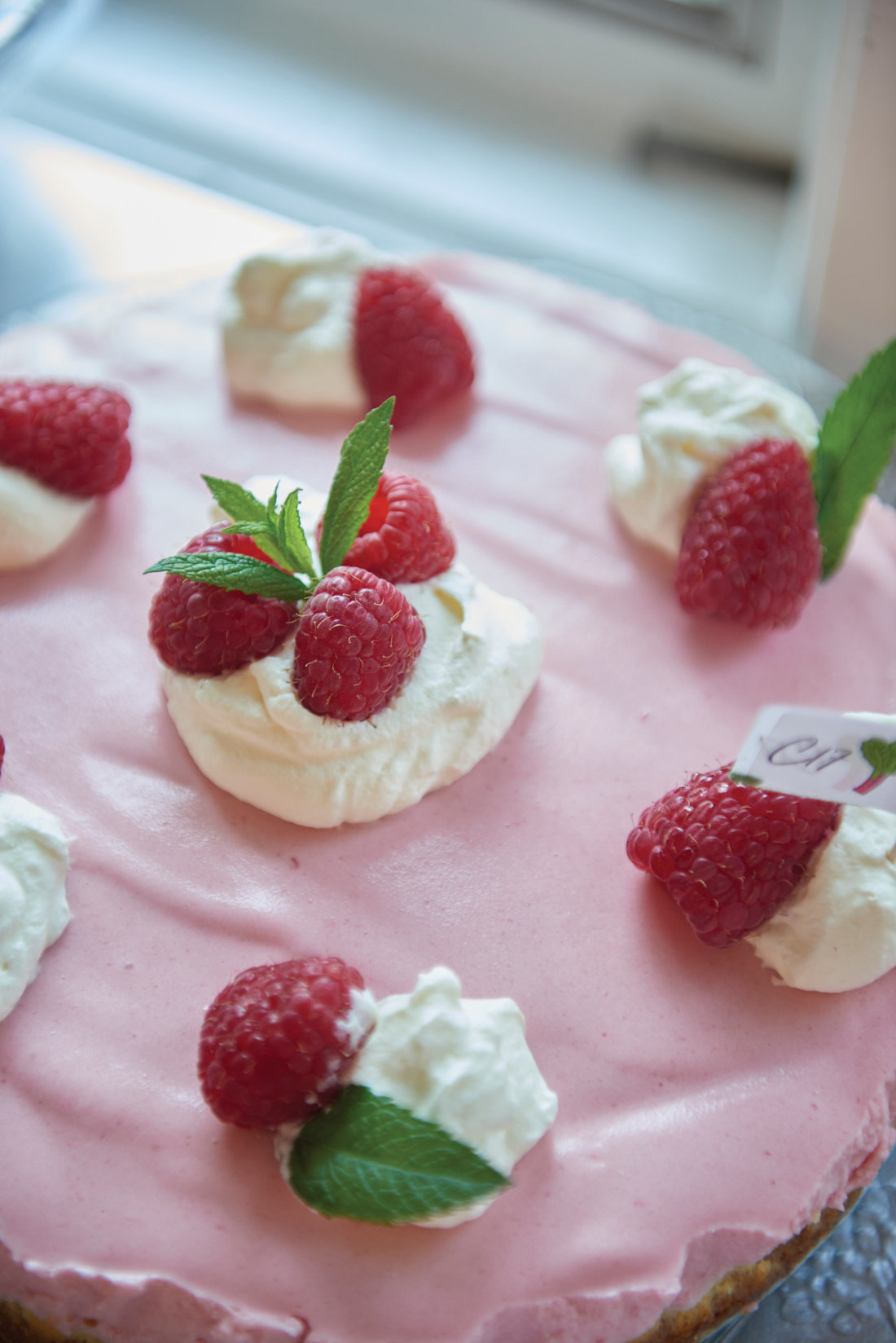
Diann Stoltzfus’ raspberry-rhubarb mousse torte (second place in desserts) demonstrated how well rhubarb pairs with various fruits.
Avoid harvesting in the first year to help the plant establish itself. In subsequent years, limit annual harvests to roughly one-third of each plant to ensure long-term health and sustainability. By doing so, plants can live as long as 20 years.
The large, attractive leaves are inedible, containing oxalic acid, so discard them. (If you would ingest enough of it, oxalic acid, which is a toxin, can cause the esophagus to swell shut.) However, it’s safe to use rhubarb leaves in compost.
Rhubarb can also be “forced,” a practice of trading the long-term health of the plant for a quick, single-year gain of tender stalks. When forcing pots, you’ll need to cover the crowns in early spring to encourage rapid growth.
Home gardeners can source rhubarb at local greenhouses. This spring, Ken’s Gardens lists the variety ‘Strawberry Red’ for sale.
This year’s Rhubarb Festival at Kitchen Kettle Village in Intercourse will be held May 19 and 20. The baking contest will be held Saturday morning. For details and an array of rhubarb-based recipes, visit kitchenkettle.com.


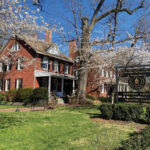
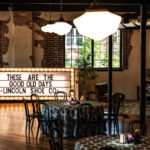

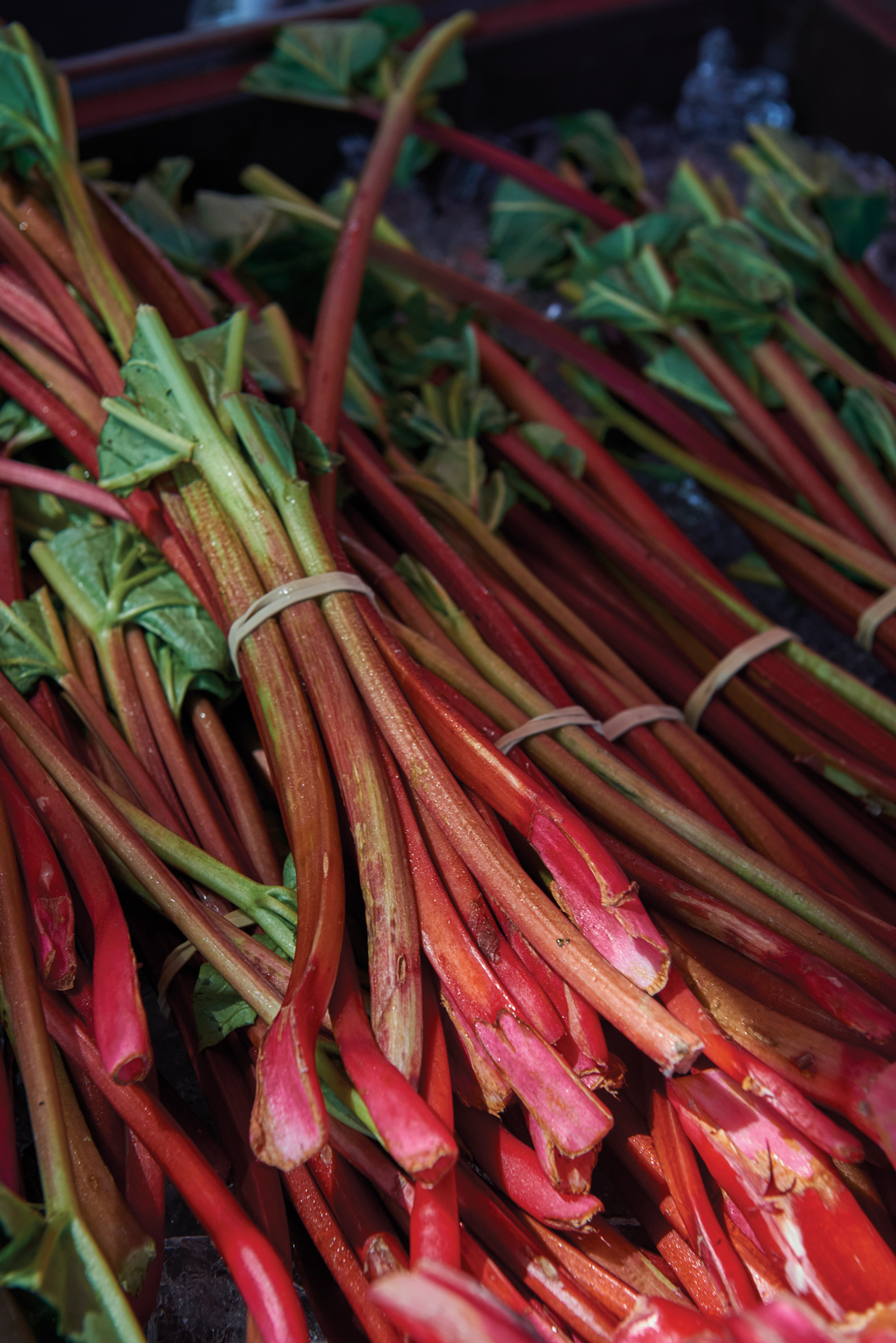
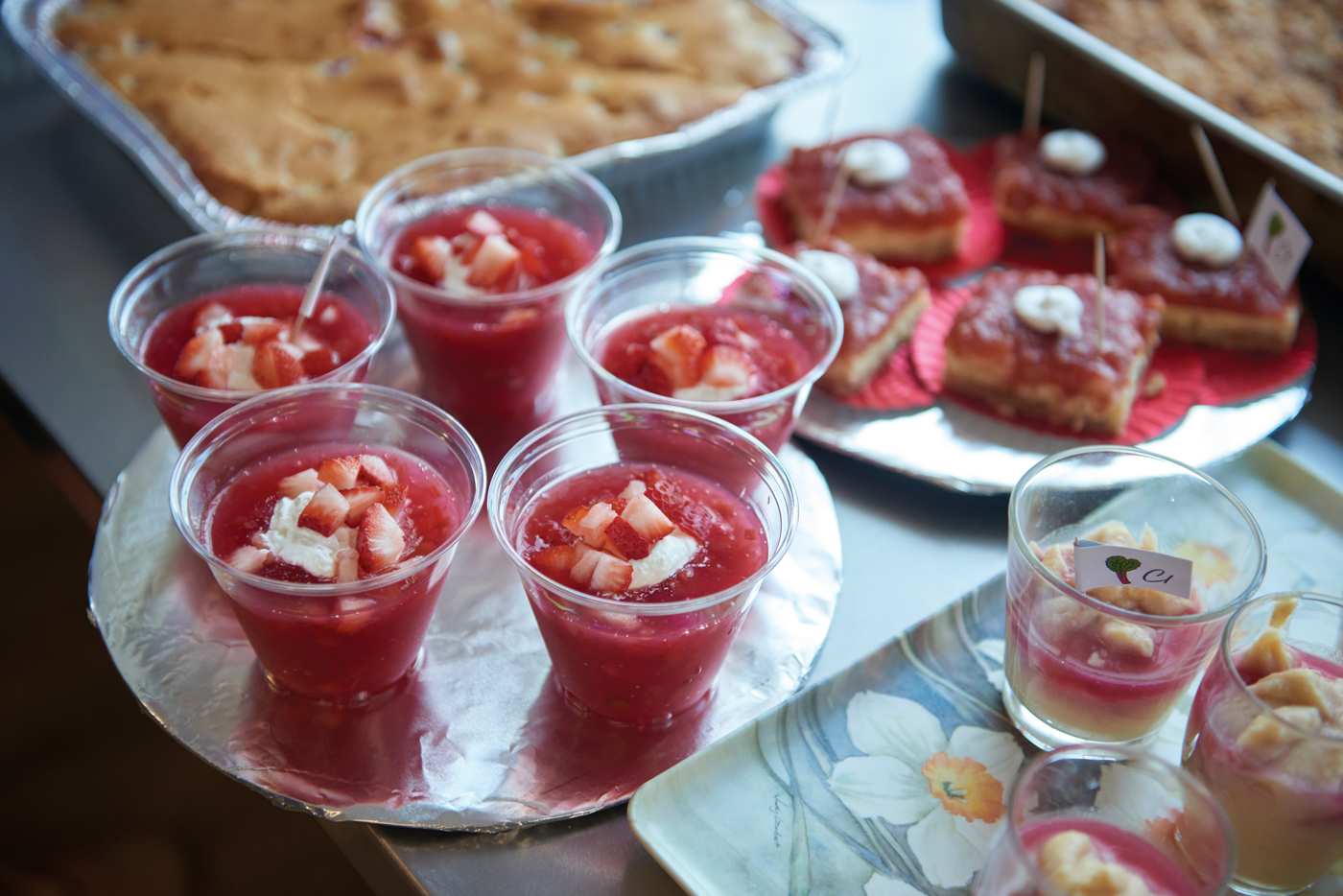
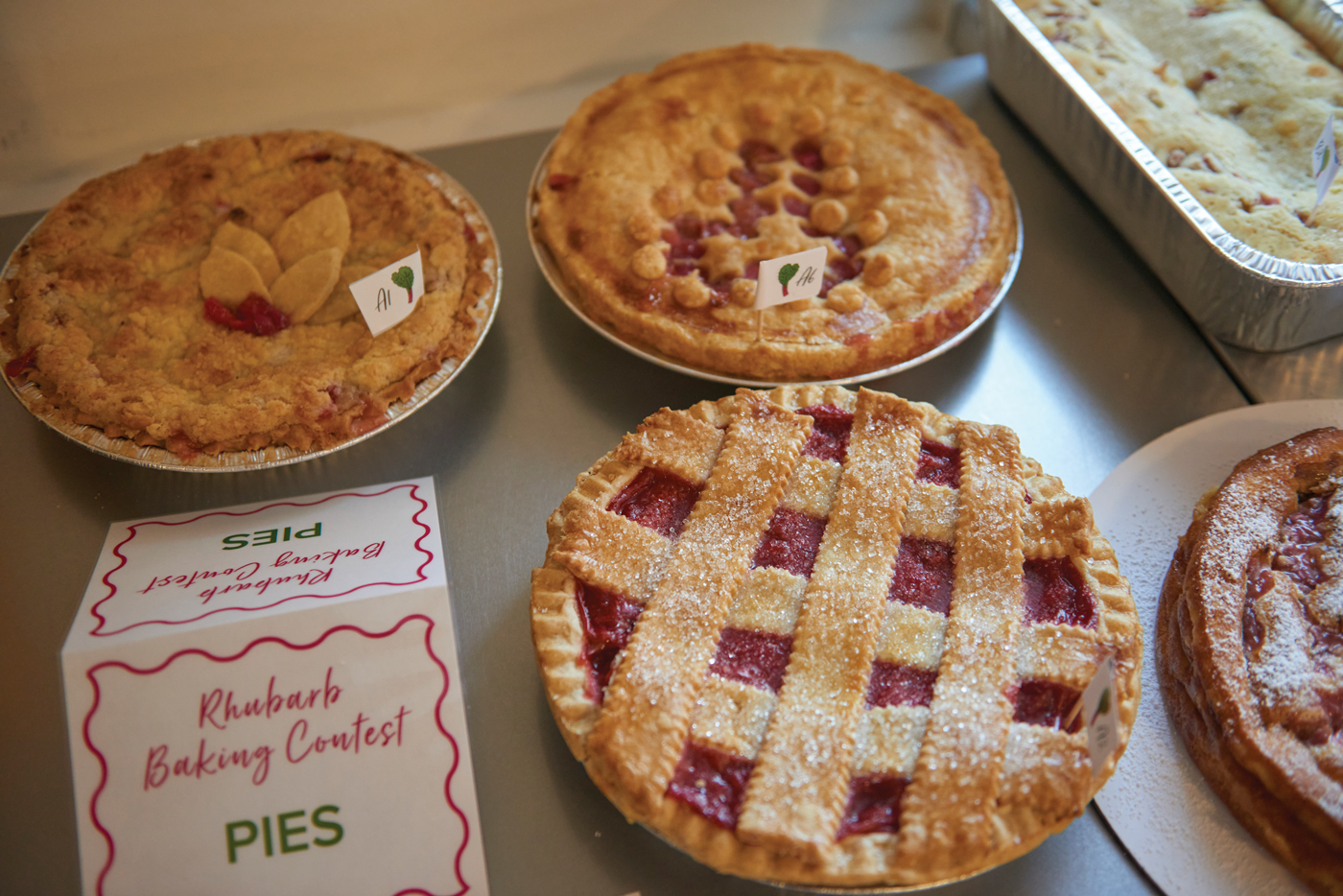
SHARE
PRINT